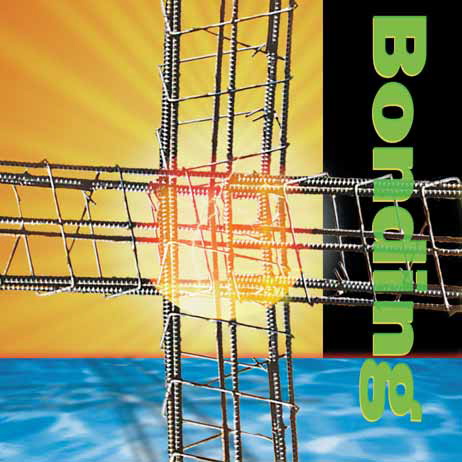ARTICLES
Advance Search
Aquatic Health
Aquatic Health, Fitness & Safety
Around the Internet
Aquatic Culture
Aquatic Technology
Artful Endeavors
Celebrity Corner
Life Aquatic
Must-See Watershapes
People with Cameras
Watershapes in the Headlines
Art/Architectural History
Book & Media Reviews
Commentaries, Interviews & Profiles
Concrete Science
Environment
Fountains
Geotechnical
Join the Dialogue
Landscape, Plants, Hardscape & Decks
Lighter Side
Ripples
Test Your Knowledge
The Aquatic Quiz
Other Waterfeatures (from birdbaths to lakes)
Outdoor Living, Fire Features, Amenities & Lighting
Plants
Ponds, Streams & Waterfalls
Pools & Spas
Professional Watershaping
Structures (Editor's Notes)
Travelogues & History
Water Chemistry
WaterShapes TV
WaterShapes World Blog
Web Links
Around the Internet
Aquatic Culture
Aquatic Technology
Artful Endeavors
Celebrity Corner
Life Aquatic
Must-See Watershapes
People with Cameras
Watershapes in the Headlines
Last month we covered the "hows" of grounding pretty well. Using the definitions from the National Electrical Code (NEC) for guidance, we saw that in order to be considered effectively grounded, the non-current-carrying metal parts of all equipment associated with a watershape must be connected to the system grounding bus at the electrical service panel. This is accomplished by installing a green-colored (or green with a yellow stripe), minimum No. 12 AWG insulated copper conductor between the equipment's grounding terminal and the system grounding bus. This conductor is
When we think of water, much of the time we think of a tropical scene - Hawaii, the Caribbean or some other exotic island somewhere - a place we'd all like to go. Why not create that "somewhere else" in your clients' backyards? They'll thank you for all the money you'll save them on that cruise that probably would have been less than perfect anyway. And this tropical scene will be one they can enjoy not only this week, but for as long as they want. Imagine palm trees swaying in the wind, the sweet smell of
Throughout my entire working life, I've never moved too far away from the water. From my early days as a pool manager (beach bum) at a resort hotel in Miami Beach through many years in pool service and still today, I've always worked and played in and around water. Whatever it is about bodies of water that infects people's spirits and pushes their internal fun buttons, I have it bad: I love to sail, fish and snorkel, I like living near bodies of water and I just love to look at water. On top of all that, I'm a Pisces. If there's one thing I find that I tend to have in common with my customers, it's this passion for things aquatic and the pleasures that come along with them. This is powerful stuff, and I've come to believe that our innate fascination rises to an even higher level of drama and interest when
In the year since we launched this "new magazine for a new era," many of you have called or written to tell us that you like what we're doing and that you share the magazine's fundamental vision: that the future of
The gardening impulse of the Japanese is truly ancient. In times before recorded history, sacred outdoor spaces around Shinto shrines and Buddhist temples were arranged according to this design vision. And through more than 1,000 years of recorded history, gardens have been created and refined by priests, warriors and emperors alike in spaces both public and private. The style isn't original in the strictest sense: In many ways, the gardens of Japan find their sources in Chinese gardening styles and landscape painting. But the Japanese developed and refined their borrowings to fit their own national taste for subtle naturalism and elegant rusticity. The result is an amazingly coherent and distinctive landscaping style that now can be experienced at hundreds of public gardens in Japan. The nice thing today is that you don't have to live in Tokyo to appreciate Japanese gardens - or to incorprate their principles into your designs. In fact, garden designers around the world now use the obvious elements of Japanese gardens - the stone lanterns, gravel and clipped azaleas - in naturalistic and asymmetrical settings of all shapes and sizes. In some cases, the total look of the garden is Japanese; in others, its principles are used to
Through the years, the #1 question asked of me at seminars and trade shows has been: "What's the difference between bonding and grounding?" I have wanted to do an answering article far some time, but I was concerned that its length would require it to be split into two pieces and that the every-other-month format of WaterShapes might make it difficult to maintain continuity of thought over a two-month span. I was pleased when our editor informed me that we would be going monthly for a while. I figured I'd strike now, while the fingers are nimble and the magazine issues more
Let's say your clients have spent all their loose change on your watershape and can't afford to hire a landscape designer or architect. They don't even want to meet that wonderful person you've been telling them about. So why not suggest a few plants that will really spiff up their new backyard Niagara Falls? If you're brave enough to try, I'll help you here and in a couple of future columns. Let's start by talking about
Long before the Bobcats show up, most watershape designers will have used some sort of two-dimensional artwork to excavate their customers' imaginations. Perhaps it starts with old photographs in a portfolio, but it almost always ends up with new drawings that encourage precise, detailed communication between designer and client in a way that can never be fully achieved with verbal descriptions or written proposals. If done with appropriate detail and skill, a drawing gives designer and client the opportunity to explore the
Not long ago, my friend and Genesis 3 co-founder David Tisherman was in Miami. We took the opportunity to drive around and look at some of my jobs. As we moved through the Coral Gables area, really enjoying that beautiful waterfront community, he said, "This is nice. I'd really love to work around here." Now, in case you don't know, Mr. Tisherman is one of the finest pool designers and builders anywhere. My first reaction to his remark was, "Jeez, what would






















Insights at the Kitchen Table